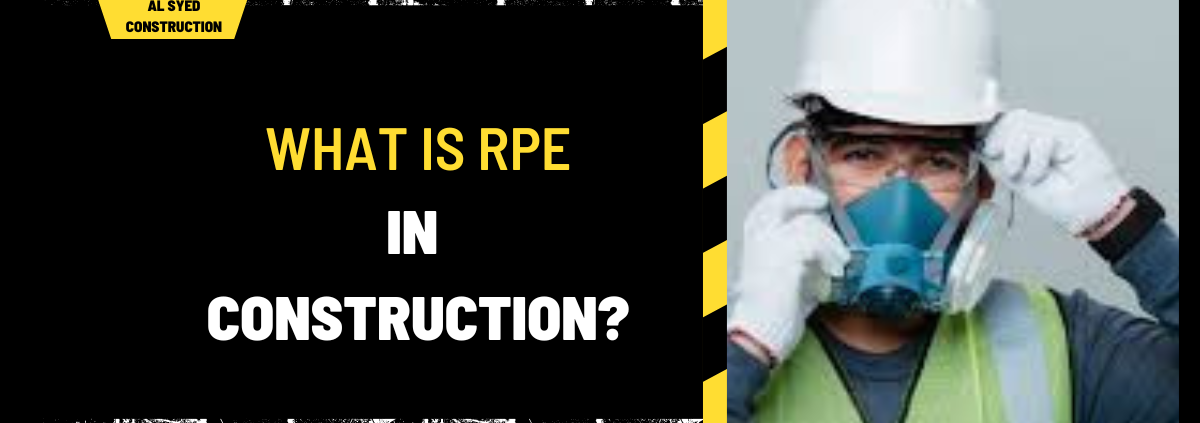What is RPE in Construction?
Table of Contents
Introduction to RPE in Construction
Respiratory Protective Equipment (RPE) is a critical component in the construction industry, designed to protect workers from inhaling harmful substances present in the work environment. These substances can include dust, fumes, gases, and vapors, which pose significant health risks if proper protective measures are not in place. In this comprehensive guide, we will explore the various types of RPE, their importance, selection criteria, and proper usage to ensure maximum protection for construction workers.
Types of Respiratory Protective Equipment (RPE)
1. Disposable Respirators
Disposable respirators are single-use masks typically made from a lightweight filtering material. These respirators, often referred to as dust masks, are suitable for protection against particulate hazards such as dust and mists. They are cost-effective and easy to use, making them a popular choice for short-term or infrequent use.
2. Half-Face Respirators
Half-face respirators cover the nose and mouth and are equipped with replaceable filters or cartridges. These respirators provide protection against a broader range of contaminants, including particulates, gases, and vapors. They offer a higher level of protection compared to disposable respirators and are suitable for more extended use.
3. Full-Face Respirators
Full-face respirators offer comprehensive protection by covering the entire face, including the eyes. This type of respirator is ideal for environments where there is a risk of eye irritation from harmful substances. Full-face respirators provide the highest level of protection against a wide range of contaminants and are essential for high-risk tasks.
4. Powered Air-Purifying Respirators (PAPRs)
Powered Air-Purifying Respirators (PAPRs) use a battery-powered blower to force air through filters, providing clean air to the wearer. PAPRs are beneficial in environments with high contaminant levels or where long-duration use is required. They offer increased comfort and reduced breathing resistance, making them suitable for strenuous activities.
5. Supplied-Air Respirators (SARs)
Supplied-Air Respirators (SARs) provide clean air from an external source through a hose connected to the respirator. SARs are ideal for environments with highly toxic or oxygen-deficient atmospheres. They offer an uninterrupted supply of clean air, ensuring maximum protection for workers in extremely hazardous conditions.
Importance of RPE in Construction
1. Protecting Worker Health
The primary purpose of RPE is to safeguard the health of construction workers by preventing the inhalation of hazardous substances. Prolonged exposure to dust, fumes, and vapors can lead to severe health issues such as respiratory diseases, lung cancer, and chronic obstructive pulmonary disease (COPD). Effective use of RPE significantly reduces the risk of these conditions.
2. Compliance with Regulations
Construction sites are subject to strict health and safety regulations that mandate the use of appropriate RPE. Ensuring compliance with these regulations not only protects workers but also helps avoid legal penalties and potential work stoppages. Adhering to RPE requirements demonstrates a commitment to workplace safety and regulatory standards.
3. Enhancing Productivity
Healthy workers are more productive. By providing adequate respiratory protection, employers can minimize the incidence of work-related illnesses and absenteeism. This leads to a more efficient workforce and can ultimately result in higher productivity and project timelines being met more reliably.
Selecting the Right RPE
1. Hazard Assessment
The first step in selecting the appropriate RPE is conducting a thorough hazard assessment. This involves identifying the types and concentrations of contaminants present in the work environment. Understanding the specific hazards allows for the selection of RPE that provides adequate protection.
2. Fit Testing
Proper fit is crucial for the effectiveness of RPE. Fit testing ensures that the respirator forms a secure seal on the wearer’s face, preventing contaminants from bypassing the filter. Both qualitative and quantitative fit testing methods are used to verify the fit and identify any potential leaks.
3. Comfort and Usability
RPE should be comfortable to wear, especially for prolonged periods. Consider factors such as weight, breathing resistance, and ease of communication when selecting RPE. Comfortable equipment is more likely to be used consistently and correctly by workers.
4. Maintenance and Storage
Reusable RPE requires regular maintenance and proper storage to ensure ongoing effectiveness. This includes cleaning, inspecting, and replacing filters or cartridges as needed. Proper care extends the lifespan of the equipment and maintains its protective capabilities.
Proper Usage of RPE
1. Training and Education
Workers must receive comprehensive training on the correct use of RPE. This includes how to don and doff the equipment, perform fit checks, and recognize signs of equipment failure. Ongoing education ensures that workers remain informed about the latest safety practices and equipment updates.
2. Routine Inspections
Regular inspections of RPE are essential to ensure its continued effectiveness. Inspecting for wear and tear, damage, and proper functioning helps identify issues before they compromise safety. A proactive approach to maintenance prevents equipment failure during use.
3. Adherence to Guidelines
Adhering to manufacturer guidelines and safety regulations is critical for the proper use of RPE. This includes following recommended usage limits, maintenance schedules, and replacement intervals. Compliance with guidelines ensures that RPE provides the intended level of protection.
4. Monitoring and Review
Continuous monitoring and periodic review of RPE use and effectiveness are necessary to maintain a safe work environment. This involves collecting feedback from workers, conducting regular audits, and updating practices based on the latest safety standards. Ongoing assessment helps in identifying areas for improvement and ensures the highest level of respiratory protection.
Conclusion
In conclusion, Respiratory Protective Equipment (RPE) is an essential element in the construction industry, vital for protecting workers from hazardous airborne contaminants. Understanding the various types of RPE, their importance, and proper usage is crucial for maintaining a safe and healthy work environment. By selecting the appropriate RPE, conducting regular training and fit testing, and adhering to maintenance guidelines, we can ensure that workers are adequately protected and can perform their duties safely and efficiently.




